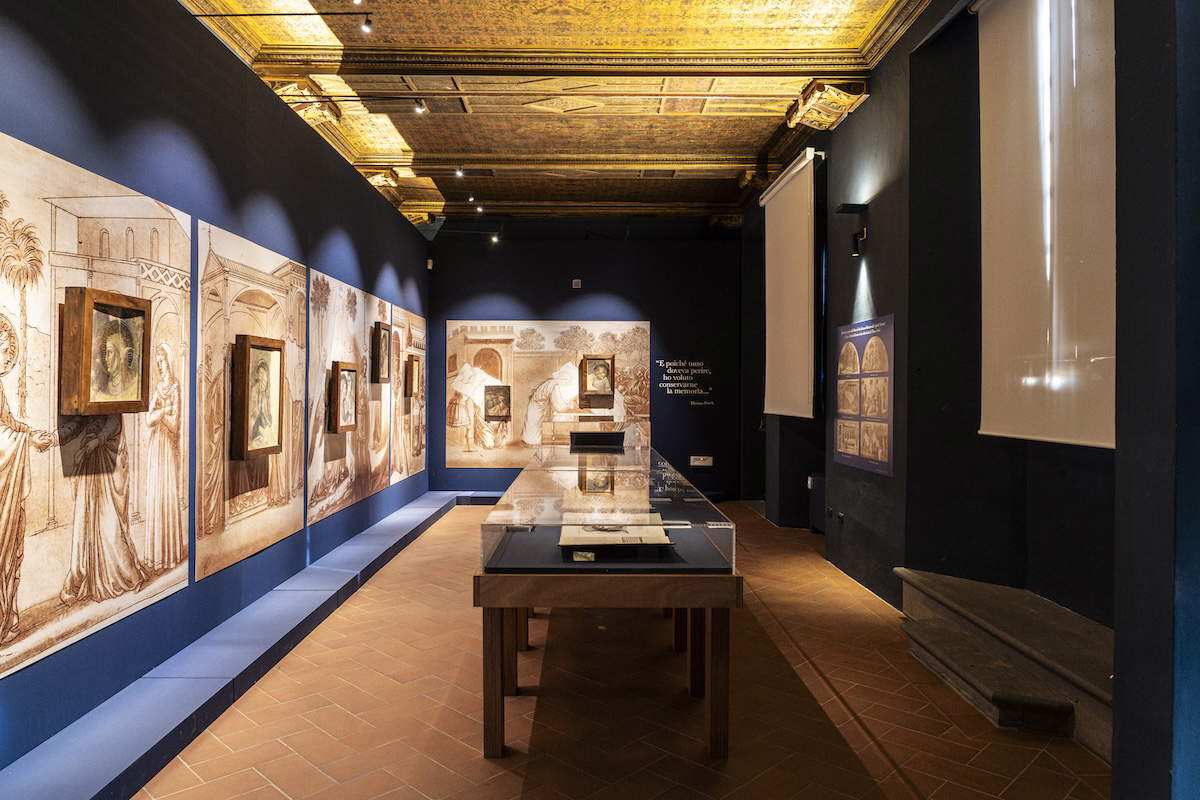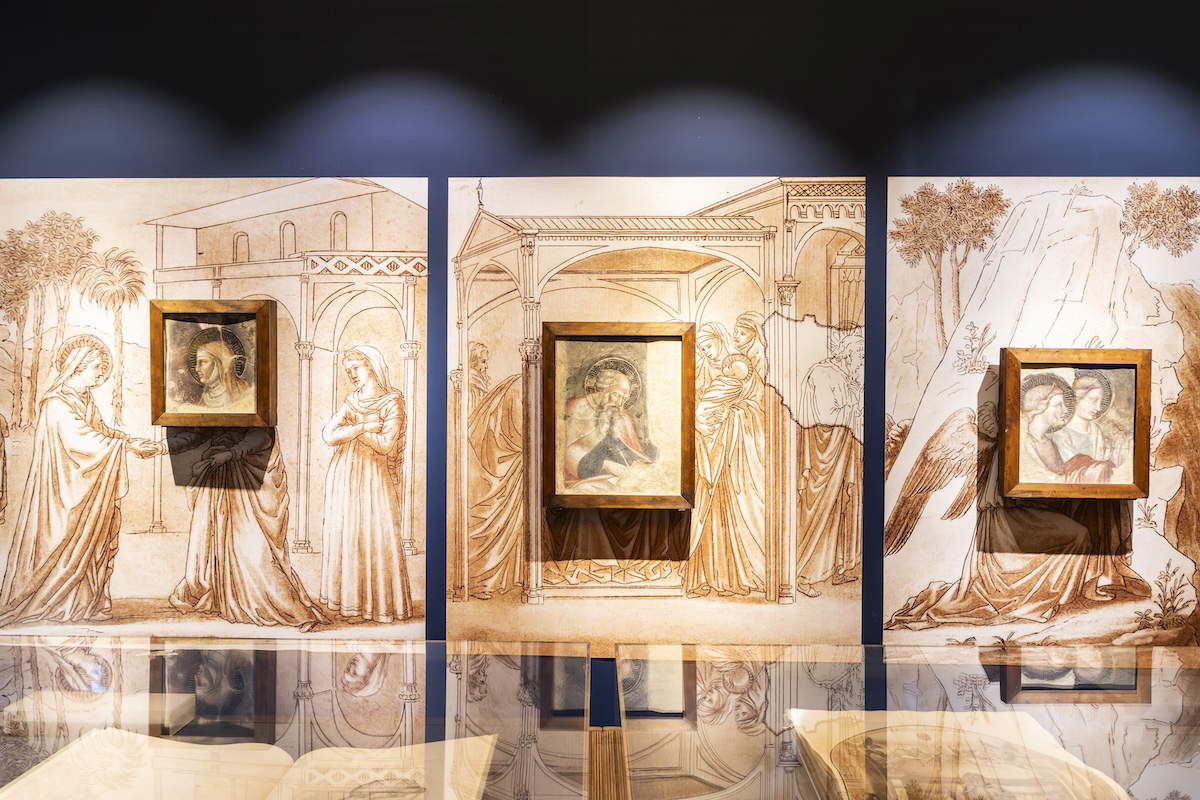On the 300th anniversary of the birth of Thomas Patch (Exeter, 1725 - Florence, 1782), Florence dedicates an exhibition to the English artist that explores his relationship with the city and his publishing activities, revealing a crucial chapter in the history of European taste between the 18th and 19th centuries. From October 3 to December 15, 2025, Museo Stefano Bardini is hosting Thomas Patch in Florence. The Memory of the Middle Ages and the Renaissance, an exhibition sponsored by the City of Florence, curated by Giulia Coco and organized by Fondazione MUS.E with scientific coordination by Carlo Francini and Valentina Zucchi.
Born in Exeter (England) in 1725, Patch moved to Florence in 1755 after a period spent in Rome, interrupted by an expulsion decreed by papal authorities. In the city on the Arno he found his place of choice and became a central figure in the vibrant English-speaking community gathered around the diplomat Sir Horace Mann. His activities brought him into dialogue with scholars, aristocrats and artists, placing him at the crossroads of a network of relationships that made Florence a key stop on the Grand Tour. Patch was a painter of urban views, a brilliant caricaturist and a keen observer of the cosmopolitan society of the time. Above all, however, his name is linked to his work as a connoisseur and popularizer of Tuscan art between the fourteenth and fifteenth centuries, a period then referred to as the era of the primitives. At a time when critical attention was mainly focused on Renaissance and Baroque art, Patch recognized the value of the Old Masters, anticipating that rediscovery of medieval protagonists that would characterize the nineteenth century.

“An exhibition that combines the occasion of celebrating the three hundredth anniversary of Thomas Patch’s birth and the centenary of the opening of the Museo Civico Stefano Bardini,” explains Giovanni Bettarini, councilor for culture of the City of Florence. “An exhibition that brings us to know Patch, the artist who chose Florence as his chosen home in the 18th century, becoming a fundamental bridge between the vibrant English-speaking community and the Florentine community. The ’feather in the cap’ of this exhibition is the extraordinary presentation of some fragments of the frescoes of the Manetti Chapel in Santa Maria del Carmine, recovered by Patch himself. The figure of Thomas Patch thus enters into ideal harmony with that of Stefano Bardini, both of whom were moved by a deep sensitivity to the recovery and enhancement of ancient works. I invite everyone to discover the exhibition from Oct. 3 to Dec. 15 and to participate in the rich program of insights, which reinforces our commitment to enhancing the heritage of the Florentine Civic Museums.”
“One hundred years have passed since the opening of the Museo Civico Stefano Bardini, three hundred have passed since the birth of Thomas Patch, and we could not fail to celebrate these two anniversaries,” explained the exhibition’s scientific coordinator Carlo Francini. “We thought it would be a good idea to bring together two anniversaries here at the Bardini Museum to give an account of a significant moment in the history of our city and its heritage represented by the fruitful relationship of the Anglo-Saxon community with Florence, perhaps at the moment of its greatest splendor. We had already touched on the subject with Joshua Reynolds in 2023 (another centenary), now it is the turn of Thomas Patch, a multifaceted and histrionic artist who without fear of contradiction fully deserves the title of Anglo-Florentine. The idea of exhibiting the detached fragments of the frescoes of the Manetti Chapel at the Carmine, reproduced by Thomas Patch and now exceptionally usable, are the highlight of this exhibition, and are part of a path of enhancement of the Carmine complex that the Florentine Civic Museums want to initiate.”
The exhibition highlights the artist’s major editorial endeavors, including The Life of Masaccio (1770), The Life of Fra Bartolomeo della Porta (1772) and The Life of Giotto (1772), as well as the series of engravings dedicated to the Gate of Paradise of the Baptistery of Florence (1772-1774), created in collaboration with Ferdinando Gregori and entitled Thirty-four Engravings of the Third Gate of the Baptistery of St. John in the City of Florence. These works contributed to the construction of a visual canon of the Middle Ages and early Renaissance accessible to the European public.
Among the most important achievements of his work, The Life of Giotto was instrumental in preserving the memory of the paintings in the Manetti Chapel in Santa Maria del Carmine, then attributed to Giotto and now recognized as the work of Spinello Aretino. Patch did not just reproduce the scenes through engraving: he also managed to save portions of the frescoes before the chapel was dismantled, fragments that started an international circulation and ended up in public and private collections in Italy and abroad.
 The exhibition Thomas Patch in Florence. The Memory of the Middle Ages and the Renaissance at the Stefano Bardini Museum in Florence. Photo: Gianmarco Caroti
The exhibition Thomas Patch in Florence. The Memory of the Middle Ages and the Renaissance at the Stefano Bardini Museum in Florence. Photo: Gianmarco Caroti“After paying homage to the Florentine sojourn of Sir Joshua Reynolds two years ago, we are returning to evoke the atmospheres that connoted Florence in the late 18th century with an exhibition centered on a great artist and lover of Florentine art, Thomas Patch,” says Valentina Zucchi, scientific coordinator of the exhibition. “His sensitivity to the Old Masters-and the publications that followed-helped spread the taste and desire for Florence to England and throughout Europe. In deference to the Florentine Civic Museums and their history, the exhibition pays special attention to the frescoes of the Manetti Chapel in Santa Maria del Carmine, to which Patch devoted himself, and to the Museo Stefano Bardini, marking an ideal continuity between the collecting and the art market that sprang up around the Anglo-Saxon community in Florence at that time and that would experience an important expansion between the nineteenth and twentieth centuries, seeing Bardini himself among its protagonists.”
“An eclectic man of his time, Thomas Patch practiced different artistic techniques and genres,” said curator Giulia Coco.“The exhibition focuses on one of his many interests, perhaps the most ’experimental,’ which led him to practice engraving and the extraction of parts of frescoes as a self-taught artist, moved by curiosity and a fairly precocious taste for primitives, shared by his compatriots, as well as a concern for preserving figurative evidence of the past, a current theme in the cultural debate of those years in Florence.”
The exhibition offers the public a rare opportunity: seven of the twelve known fragments of the Stories of St. John the Baptist are brought together and presented thanks to loans from the Museo Nazionale di San Matteo in Pisa and the Pinacoteca Malaspina in Pavia. Comparison of the surviving fragments with Patch’s engraved scenes allows a close look at his working method and an understanding of the documentary value of his publications. The installation, designed to enhance this dual dimension, offers a direct dialogue between the visual memory restored by the artist and the material evidence he saved. To return his engravings and detached frescoes today is to investigate the complexity of the figure of Thomas Patch, an artist and merchant capable of moving between creation and dissemination. His work, deeply linked to the culture of the Grand Tour, put the image of Florence and its artistic roots into circulation in the European context. In this sense, the exhibition creates an ideal bridge with the figure of Stefano Bardini, who in the 19th century built his business on the recovery and enhancement of ancient works and detached frescoes, giving life to the civic museum that now hosts the exhibition.
The program is enriched by a series of appointments that explore Patch’s work and the art-historical context in which he worked. On Oct. 19 at 11 a.m. Giulia Coco will hold the meeting Thomas Patch and Florence: memories of an Anglo-Florentine, dedicated to the artist and the Anglo-Saxon community in the city in the 18th century. On Nov. 23, also at 11 a.m., Juri Ciani, Maria Grazia Cordua and Giulia Vaccari of the Accademia di Belle Arti in Florence will present The historic plaster cast of the Gate of Paradise: conservation and new strategies of fruition and valorization, with the results of scientific investigations and photogrammetric digitizations of Ghiberti’s cast, an essential tool for the conservation and study of the artifact. Finally, on December 14 at 11 a.m., Federica Pontini will analyze the topic Thomas Patch and the fortune of the wall fragments of the Manetti Chapel in Santa Maria del Carmine, offering an in-depth look at the collecting events related to the frescoes saved by the artist.
 |
| Florence celebrates 18th-century artist Thomas Patch and his take on the Middle Ages and Renaissance |
Warning: the translation into English of the original Italian article was created using automatic tools. We undertake to review all articles, but we do not guarantee the total absence of inaccuracies in the translation due to the program. You can find the original by clicking on the ITA button. If you find any mistake,please contact us.